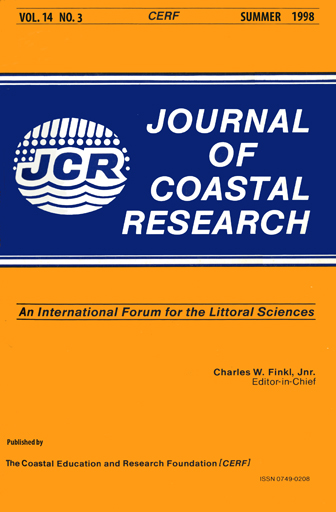Salt Marsh Sedimentary Record of the Landfall of Hurricane Andrew on the Louisiana Coast: Diatoms and Other Paleoindicators
Keywords:
Terrebonne Bay, Gulf of Mexico, paleoecologyAbstract
Hurricane Andrew made landfall on the Louisiana coast on August 26, 1992, with the eye passing 40 km southwest of a salt marsh pond already under study. Storm surges ranging from 1-3 m in proximity to the pond resulted in the deposition of a mud layer, several centimeters thick, in many areas inundated by the storm surge. Analysis of pond sediment cores distinguished a hurricane mud layer characterized as a composite sediment, containing indicators of estuarine, brackish, and freshwater sources. The composite nature of the hurricane sediment is indicated by a higher diatom species diversity coupled with a more even species representation. Other distinguishing characteristics of the mud layer include lower marine diatom abundance, larger mean grain size, more poorly sorted sediment, and lower amounts of nitrogen in the sediment. Hurricane Andrew appears to have altered the geochemistry of the pond through the reduction of sulfide in the sediment allowing the proliferation of aquatic submerged flora (Najas sp.), resulting in a diatom assemblage shift towards epiphytic species. The submerged stand was still present two years after the hurricane landfall, and the diatom population has yet to revert to the pre-hurricane community.


